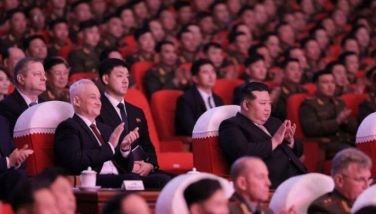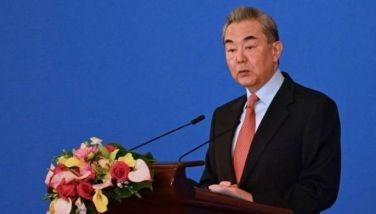China splurging on military as US pulls back
QINGDAO, China — China's navy commissioned 17 new warships last year, the most of any nation. In a little more than a decade, it's expected to have three aircraft carriers, giving it more clout than ever in a region of contested seas and festering territorial disputes.
Those numbers testify to huge increases in defense spending that have endowed China with the largest military budget behind the United States and fueled an increasingly large and sophisticated defense industry. While Beijing still lags far behind the U.S. in both funding and technology, its spending boom is attracting new scrutiny at a time of severe cuts in U.S. defense budgets that have some questioning Washington's commitments to its Asian allies, including some who have lingering disputes with China.
Beijing's newfound military clout is one of many issues confronting President Barack Obama as he visits the region this week. Washington is faced with the daunting task of fulfilling its treaty obligations to allies such as Japan and the Philippines, while also maintaining cordial relation with key economic partner and rising regional power China.
China's boosted defense spending this year grew 12.2 percent to $132 billion, continuing more than two decades of nearly unbroken double-digit percentage increases that have afforded Beijing the means to potentially alter the balance of power in the Asia-Pacific. Outside observers put China's actual defense spending significantly higher, although estimates vary widely.
Increases in spending signal "strength and resolve to China's neighbors," requiring other countries to pay close attention to where Beijing is assigning its resources, said China defense expert Abraham Denmark, vice president for political and security affairs at the U.S-based National Bureau of Asian Research.
At the same time, the U.S. military is seeking to redirect resources to the Asia-Pacific as it draws down its defense commitment in Afghanistan, although officers warn that budget cuts could potentially threaten plans to base 60 percent of U.S. naval assets to the region. Chief of Naval Operations Adm. Jonathan Greenert recently warned that U.S. capabilities to project power "would not stay ahead" of those of potential adversaries, given the fiscal restraints.
Meanwhile, China's navy is rapidly developing into a force to contend with the U.S., long the dominant military player in the Asia-Pacific region.
China commissioned its first aircraft carrier — a refurbished Ukrainian hull — in 2012, and another two indigenous carriers are expected to enter service by 2025, significantly increasing Beijing's ability to project power into the South China Sea that it claims virtually in its entirety.
Analysts say China will have as many as 78 submarines by 2020, part of an expansion that has seen it leap past the U.S. and Russia in numbers of warships delivered annually, according to experts and available figures.
"That's very much in line with the leadership's call for China to become a major military-industrial power," said Tai Ming Cheung, director of the Institute on Global Conflict and Cooperation at the University of California, San Diego.
By comparison, the U.S. Navy takes on about 10 major vessels per year, while Russia averages slightly less.
Despite the impressive hardware, uncertainty still surrounds the capabilities of China's armed forces, which haven't seen significant combat since the end of the Korean War in 1953. Home-grown technologies have yet to be tested in battle, and training and organization are hampered by a risk-adverse attitude and overemphasis on political indoctrination that reflects the People's Liberation Army's essential role as the defender of the ruling Communist Party.
"Being the world leader is all about software and networking," said Denny Roy, an expert on the Chinese military at the East-West Center in Hawaii, referring to problems with China's command structure and communications.
Concerns about Chinese aggression focus on three scenarios: An attack on self-governing island democracy Taiwan that China claims as its own territory; an attempt to seize uninhabited East China Sea islands controlled by Japan but claimed by China; and a move to drive off claimants to waters and islands claimed by China in the South China Sea.
All those situations pose considerable risks for Beijing, ranging from a lack of transport and resupply capabilities, to the near certainty of the formidable U.S. military responding in defense of its allies. Japan and the Philippines are U.S. treaty partners, while American law requires Washington to respond to threats against Taiwan.
Although tensions with Japan have grown sharper over the islands dispute, Beijing takes great pains to play down the impact its military may have on the region. Its explanations about its military buildup, however, mix a proclaimed desire for closer cooperation with prickly nationalism.
Addressing navy chiefs from two dozen nations gathered at a forum in the eastern Chinese port city of Qingdao on Wednesday, one of China's most powerful generals said China is committed to maintain peace and stability but would never compromise its national interests.
"No country should expect China to swallow the bitter pill of compromising our sovereignty rights, national security and development interests," said Fan Changlong, vice chairman of the Communist Party's Central Military Commission.
- Latest
- Trending































